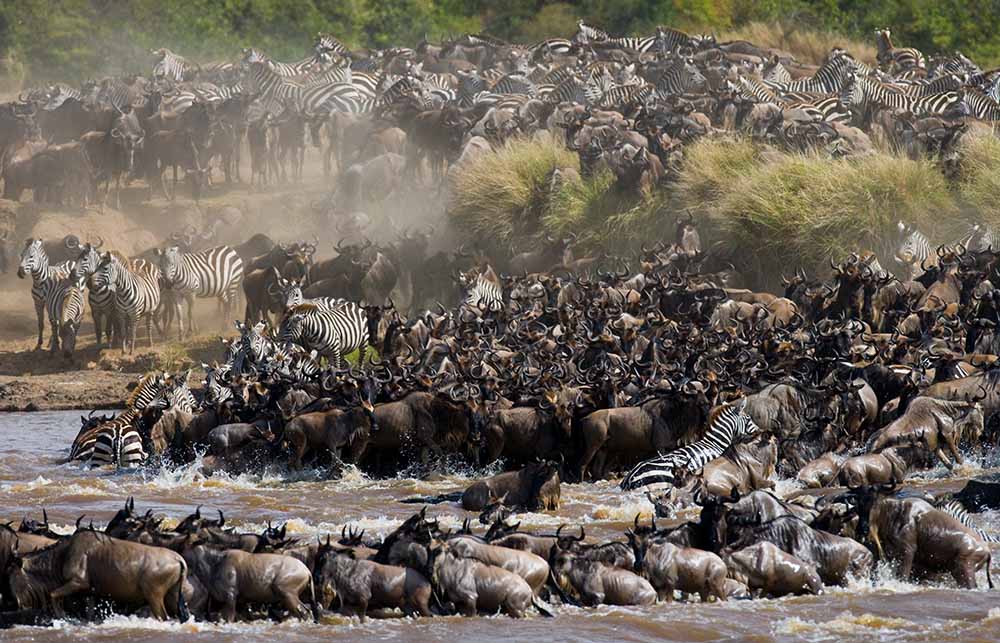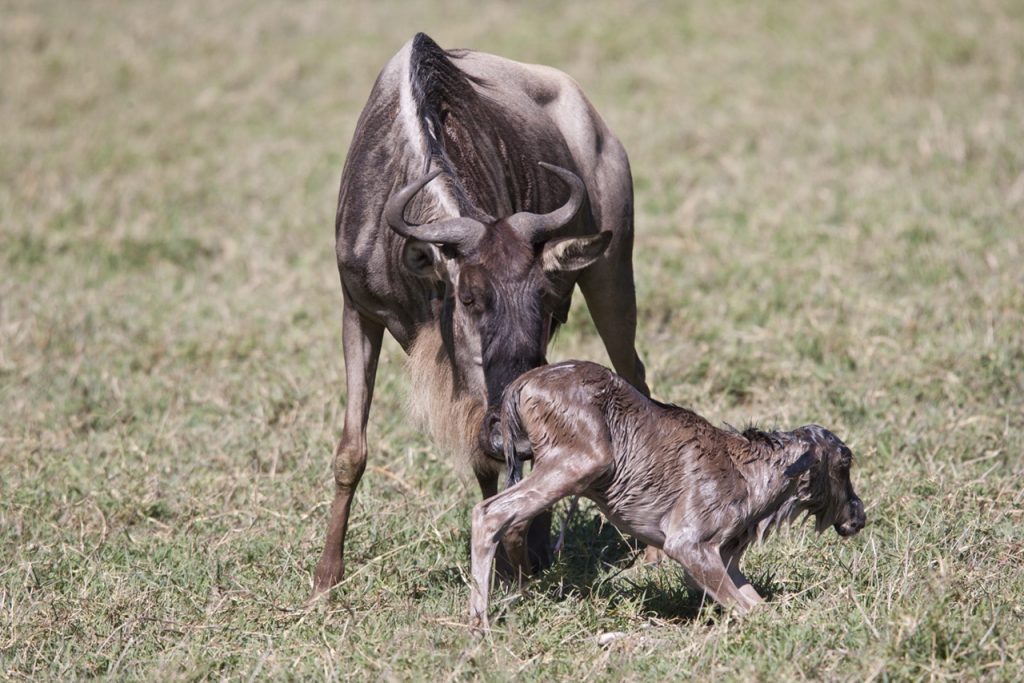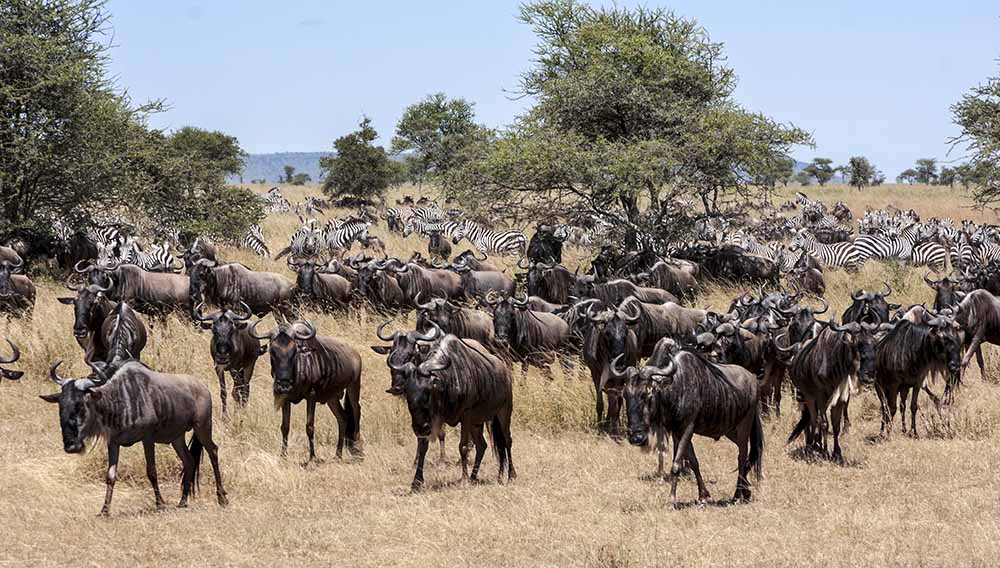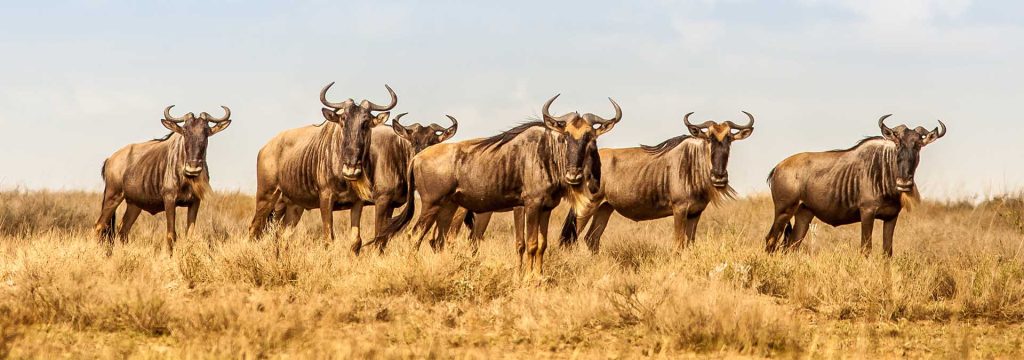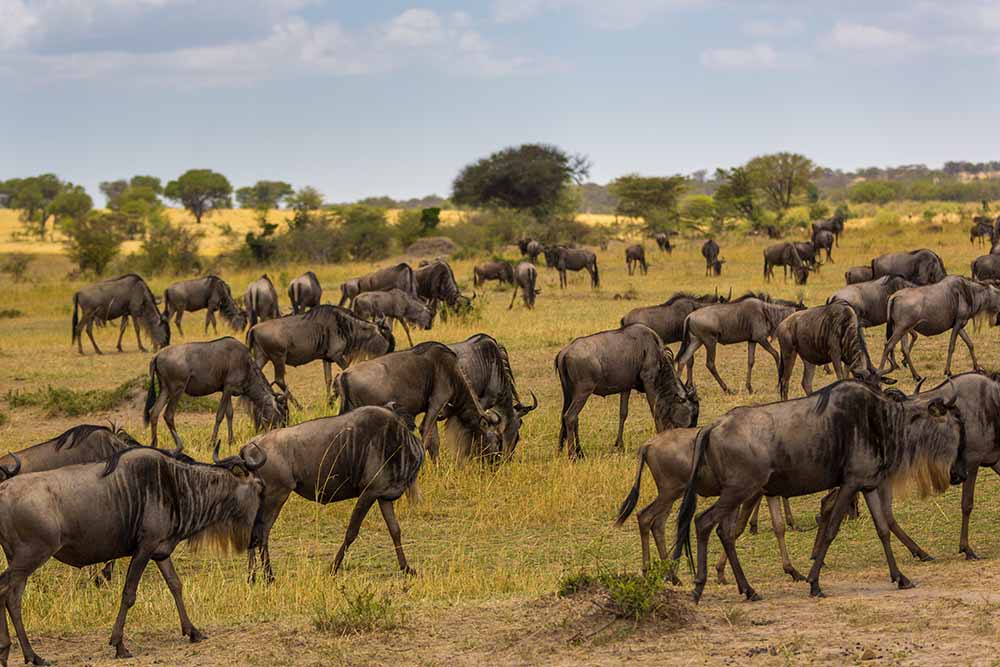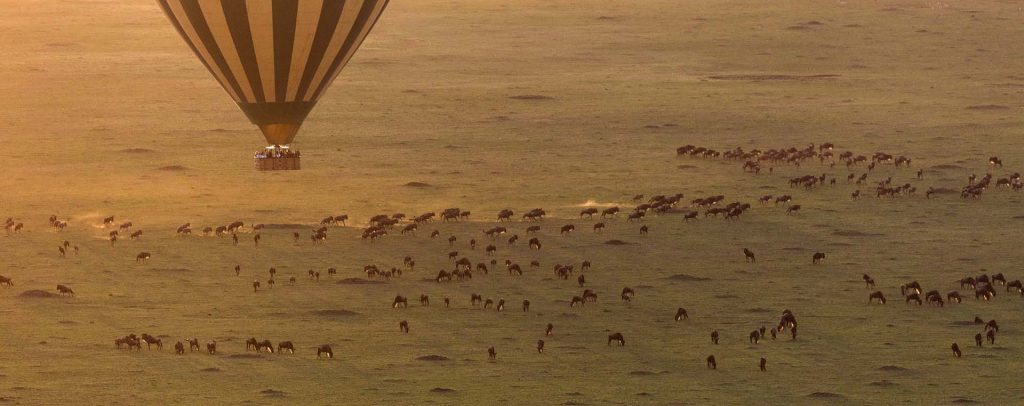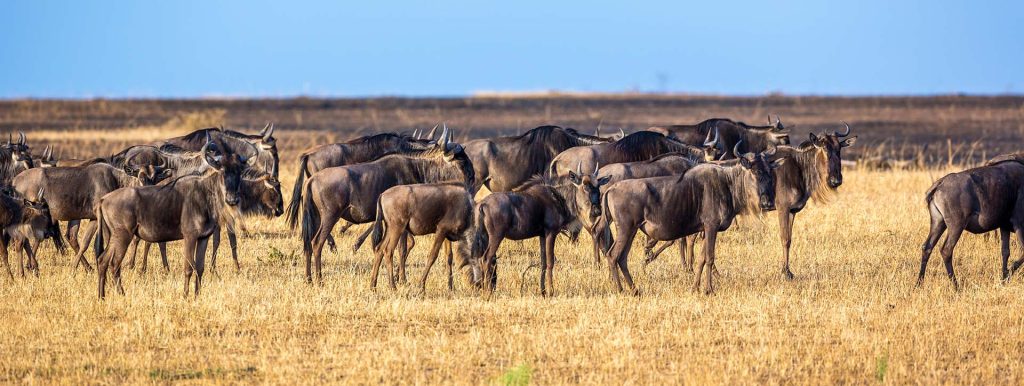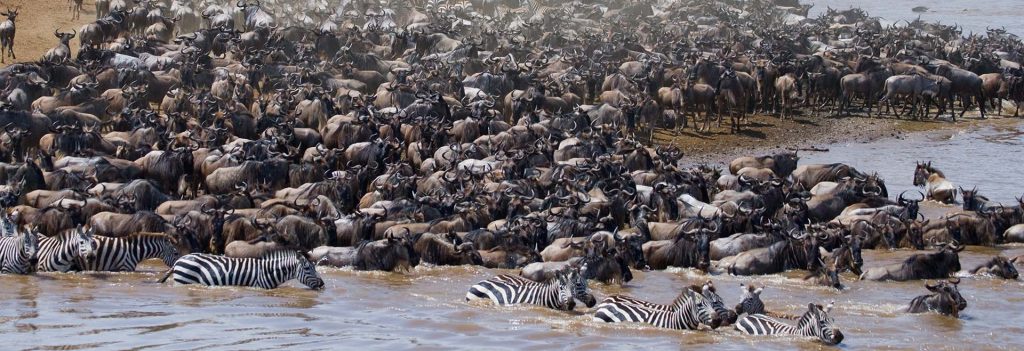How Does the Great Migration Work?
Can the Migration River Crossings be predicted?
No, not even the wildebeest know when they’re going to cross! Some arrive at the water and swim over immediately; some arrive and spend days hanging around grazing; some arrive and turn back to where they came from. We wish we could predict the crossings, but no-one can. This is why it is best to have as much time on safari as possible if you hope to see a river crossing.
What Month is the Wildebeest Migration?
Most people think that the Wildebeest Migration only takes place between July and October, but it’s actually an ever-moving, circular migration with various but equally exciting events that occur year-round. The popular river crossings usually coincide with safari’s high season (June to October), hence the perception that this is the only time of the year that the wildebeest are on the move or can be seen.
Where Does the Great Migration Start?
Because the Great Migration is a fluid, year-round movement of about two million animals across the Serengeti-Mara ecosystem, there are no defined start or end points. The Gnu Migration is triggered by East Africa’s rains and the animals follow an age-old route in search of fresh grazing and water. This epic journey takes the wildebeest across the Masai Mara plains in Kenya, all the way south into Tanzania’s Serengeti and the edge of the Ngorongoro Crater, before circling up and around in a clockwise direction.
Why Do Wildebeest Migrate?
It is generally believed that the Great Migration in Africa is dictated primarily by the wildebeest’s response to the weather. They move after the rains and the growth of new grass, essentially following a natural instinct to find food to stay alive. Some experts believe that the wildebeest are triggered by distant lightning and thunderstorms, but there is no scientific proof of it.


